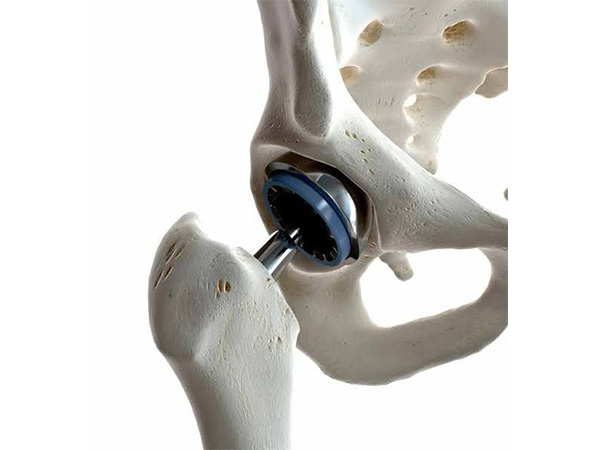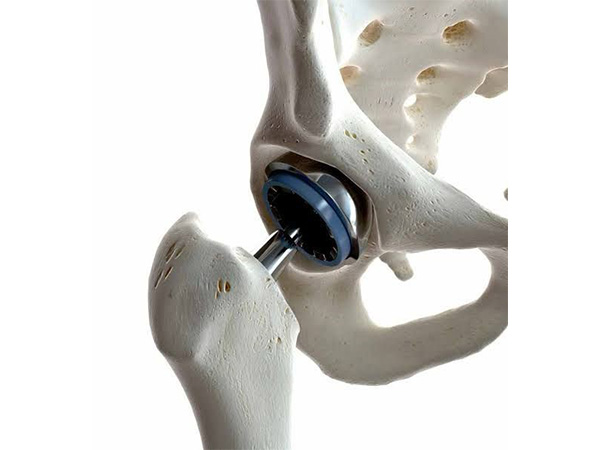Recovering from a surgery like a hip replacement involves many important steps. How should someone prepare for this process? What kinds of obstacles might appear? Will having a caregiver be necessary?
The entire process requires coordination between your healthcare professionals, yourself, and your family. Dr. Gaurav Gupta, a leading joint replacement surgeon from Jhansi with expertise in robotic procedures, shares answers to frequently asked questions and provides useful guidance for navigating recovery and rehabilitation after hip replacement surgery.
When can I go home after a hip replacement?
“Most patients begin walking and are discharged just a few days post-surgery,” explains Dr. Gaurav Gupta from Jhansi. It is not common for patients to be on bed rest for long. In fact, mobilizing the new joint early often promotes faster recovery.
However, individuals with underlying medical concerns, such as heart or lung issues that require monitoring, or those who undergo complex surgical procedures or lack at-home care, might need more time in bed before they can safely move around.
Will I need to use a walker at first?
Whether or not you’ll need assistance devices such as a walker or cane will be determined by your healthcare team, which typically includes your surgeon, physical therapist, and primary care doctor. Some people may use a walker temporarily if they feel unstable, but in many cases, such devices are not needed for long periods.
When will my hip incision heal?
“Today’s hip replacement surgeries require only small incisions,” says Dr. Gaurav Gupta. These incisions are covered with a dressing and usually heal in about six weeks. During the first couple of weeks, patients are advised to avoid bathing to prevent infection until the wound has properly closed.
How soon does rehabilitation start after the hip surgery?
“Patients begin physical therapy even before the surgery and continue right after the procedure with the help of a therapist,” says Dr. Gupta. Rehabilitation starts in the hospital and is followed by home exercises to maintain progress once the patient is discharged.
Early rehab focuses on everyday movements, like rising from a bed or sitting down and getting up from a chair. Over time, exercises become more demanding and involve actions like climbing stairs or getting into a car. Strengthening leg muscles, especially those around the hips and knees, is a major goal of the rehabilitation process through resistance exercises.
Hip and Knee Replacement at Jhansi Orthopaedic Hospital
At Jhansi Orthopaedic Hospital, the Hip and Knee Replacement program includes a specialized team of orthopaedic professionals experienced in joint replacement. Patients are guided from the initial education stage before surgery through to physical therapy and recovery after the operation. The mission is to get patients back to doing what they love as soon as safely possible.
What is considered a “normal” amount of pain after a hip replacement surgery?
After surgery, swelling and pain near the joint are normal. To ease these symptoms, patients are encouraged to rest between therapy sessions, apply ice to the leg and incision site, and take doctor-approved anti-inflammatory medicines.
Dr. Gupta recommends keeping the leg elevated above the heart while resting to help manage swelling. It’s also essential to stay aware of pain intensity. If the discomfort stays around a 6 or higher on a scale of 1 to 10, you should speak with your doctor, as this might be a sign of infection or another issue. Over time and with consistent therapy, pain should gradually reduce to levels around 1 or 2 within about 12 weeks.
How long does it take to recover after a hip replacement?
“Recovery generally spans two to four weeks, though this varies by person,” says Dr. Gupta. Factors like pre-surgery activity levels, overall health, age, and nutrition all play a role in how quickly someone recovers.
Dr. Gupta explains that patients who maintain a good fitness level before their surgery tend to experience quicker and smoother recoveries. A pre-surgery conditioning plan, often referred to as ‘prehabilitation’ or ‘prehab,’ can be an effective way to build up strength and prepare the body for recovery.
How soon can I return to regular activities after a hip replacement?
The aim of physical therapy is to help patients return to everyday routines, whether that includes going back to work, playing with children, or enjoying hobbies and sports. Recovery time will vary depending on how physically demanding those activities are.
When it comes to driving, if the surgery was on your right hip, it may take up to four weeks before you can safely drive. For a left hip replacement, driving may be possible in one to two weeks. It’s best to begin in a safe space like a parking lot and gradually return to regular driving routes. If you’re on medications that impair coordination, such as opioids, driving should be delayed accordingly.
Returning to a desk job is usually possible after about two weeks. More physically demanding work that involves lifting or standing may require up to six weeks of recovery. Sports and swimming should also wait six weeks, especially to ensure the incision has fully healed. As for sexual activity, that can be resumed whenever you feel comfortable.
What could slow down my recovery?
“While hip replacements are typically safe, like all surgeries, they come with some risk,” says Dr. Gupta. Potential complications include infection, fractures near the implant, or hip dislocation. If you experience symptoms like fever, drainage from the wound, difficulty moving your hip, or severe, unrelieved pain, consult your doctor immediately.
To avoid these issues, patients should proceed carefully with rehab, avoid abrupt or jerky movements, and take their time adjusting to physical demands to lower the chances of injury or setbacks.
How long will my hip replacement implant last?
Modern hip implants are composed of a mix of metal, ceramic, and plastic materials, making them longer-lasting and more dependable than older versions. These updated designs typically remain functional for 20 to 30 years, and the chance of needing a second surgery is relatively low.
How long after replacing one hip should I wait to replace the other?
“For patients with severe arthritis in both hips, simultaneous replacement of both joints may be an option,” says Dr. Gupta. This approach can lead to quicker overall recovery in certain cases and might be more efficient.
That said, recovery might feel more intense since both legs need to be rehabilitated together. Moving around at home can be more challenging, so added support from caregivers may be necessary. If the surgeries are done separately, a gap of at least six weeks between them is advised to reduce risks like blood clot formation.
Visit us on www.docgauravgupta.com, www.joh.co.in







